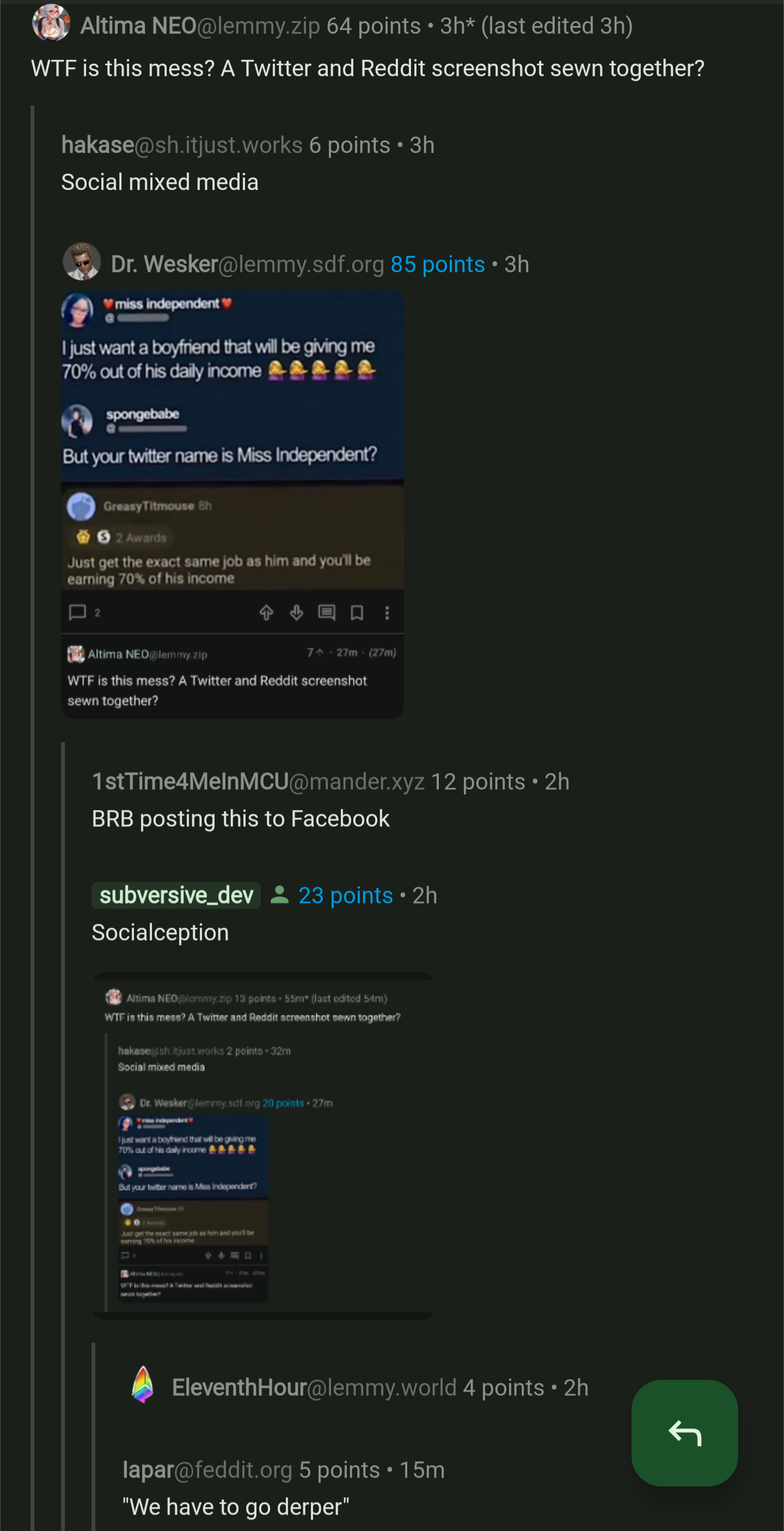subversive_dev
I sail the high seas of the Lemmyverse, posting snarky + Lefty comments
- 0 Posts
- 32 Comments
Socialception


 2·4 months ago
2·4 months agoFair enough, I capitulated and I use spotify for podcasts now

 191·4 months ago
191·4 months agoHave you used Firefox recently? There are a few chrome only sites but I’ve been daily driving it for a few months and it’s mostly upside
All the same great war crimes you know and love, now with half the calories!

 6·5 months ago
6·5 months agoThere are actually anti-greenhouse gasses like SO₂ (of acid rain fame(!))
https://en.m.wikipedia.org/wiki/Stratospheric_aerosol_injection

 3·5 months ago
3·5 months agoELI5: a database is the “memory” of a program.
Every piece of data that any software uses almost certainly comes from and goes to multiple databases.
Once the data is stored, you can execute “queries” to have powerful access to update many records at a time, read particular records based on their relationship to other records, and so much more.
Your bank balances, your purchase history, your emails, every part of your digital life is almost certainly spread across a constellation of databases.
Bonus Fediverse content:
Lemmy itself uses the Postgres database extensively. Posts, users, comments, votes and more are all individually stored in the database.
Mastodon also uses Postgres. If a post goes up on Lemmy, and a Mastodon server is federated with it, the Lemmy server will send out a HTTP request to the Mastodon server containing the contents of the post. The Mastodon server will use this information to write its own record of the post in its own database.
Regarding your question about VMs: You can run a database inside a VM, or give the VM access to an outside database via queries, or both! You might run SQLlite (a small and excellent embedded database) on the VM to track its local state, while also running queries against a large postgres database to synchronize with other services in the cluster.
Your trackpad + driver would have to have Linux gesture support, not all do

 3·7 months ago
3·7 months agoThat’s what I thought!

 5·1 year ago
5·1 year agoI did a little research and the answer is pretty interesting!
Originally, chemists assigned hydrogen a mass number of 1, and used that assumption to derive the masses of the other elements. Today we definine “1” as being 1/12 of the weight of Carbon-12 (which is very close to the average weight of hydrogen we use today)
As to the relative frequencies, they can be different at different points on earth, this Chemistry SE answer goes into a lot more detail.
If you have never done “stoichiometry” before it may not be obvious but the periodic table average weights are essential for going from “I have x grams of substance” to “I have x number of atoms/molecules of substance” and from there you can use the equation of your target reaction to precisely predict the outcome of a chemical process. If you were doing very high precision chemistry, the differences in isotopic ratio in your sample vs the standard values could introduce an error but I would guess most of the time it is insignificant.

 14·1 year ago
14·1 year agoThe atomic weight shown in the periodic table is what we measure based on the isotopic frequencies prevalent on earth. Different celestial bodies can (and do!) have different isotopic frequencies based on the conditions of their formation

 8·1 year ago
8·1 year agoIt’s pretty standard to send keypresses to the backend before the user hits submit (otherwise search boxes couldn’t do auto completion for example)
You could maybe write an extension that tries to detect the difference between this and a ‘full submit’ (and block those network requests) but I bet it would be very unreliable
The blasphemy is strong with this one

 3·1 year ago
3·1 year agoI don’t know for sure but I know their moderation is dogshit. I think they don’t want to face down the deluge of Nazis like we have had to here, they’d rather be a clique-y cool kids clubhouse of Twitter brainrot
So are we doing pickles now on Lemmy?
Stay shanty, Lemmy




If you don’t want to hear about billionaires, I invite you to try… billionaire controlled media! You will find they are scarcely mentioned at all, except to glorify the accomplishments of individual billionaires, with no consideration of class structure or generational privilege